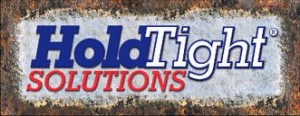Project Goals and Objectives
Posted on 13. Mar, 2009 by charles frenzel in NSRP
Project Goals and Objective:
This document is a supplement to SSPC-VIS No. 4 NACE VIS 7 (or ISO 8501-4).
SSPC-VIS No. 4 NACE VIS 7, ISO 8501-4, International Paint Hydroblasting photos, and Hempel photos do not illustrate
1) an example of lightly wiping
2) an example of the surface after excess flash rust with loose rust dust has been mitigated by pressure washing.
For this manual, “Flash Rust” is the rust that occurs from the time the waterjet (WJ) or wet abrasive blast (WAB) cleaning process starts to the time the water used for the cleaning process dries. Flash rust often looks like a rust bloom.
Look at SSPC-VIS No. 4 NACE VIS 7, ISO 8501-4, and NACE No. 5- SSPC- SP-12 for a more detailed definition of flash rust.
“Rust-Back” is used in dry abrasive blast standards. Rust-Back occurs on surfaces that appear to be dry. Rust Back is the rust that occurs when DRY, bare steel is exposed to conditions of high humidity, moisture, or a corrosive atmosphere.
“Rust Bloom” is somewhat uniform rust spread evenly over a large section of the surface. Rust Bloom is a generic description. The observer doesn’t know if it originates from flash rust or rust-back.
Coatings manufacturers will designation the level of Flash Rust that is acceptable for the coating in a specific environment.
How much “Flash Rust” is formed is directly related to time of wetness. Engineering controls and project scheduling are key in reducing the time of wetness. Look at Blast and Dry, Clean Blasting, and Drying Effects.mpg
Inspecting for “Flash rust” is not rocket science.
It is deceptively simple or deceptively hard, because the decision is subjective.
Prior to painting, look at the rust bloom on the steel.
Find out the environmental history-if there was rain, pressure washing, waterjet cleaning, or no water involved at all.
If there is no water involved, you reject the “Rust-Back.”
If there is water involved in the surface cleaning, you place VIS-4 up to the surface nest to the rust and make an initial judgment concerning light, moderate, and heavy.
If necessary, you wipe the “Flash Rust” to continue the determination between light, moderate, and heavy.
Be consistent in the determination methods.
Mitigate the flash rust to the amount required by the project specifications.
This manual does not address whether or not the amount of flash rust is suitable for coatings. Coatings manufacturers DO NOT recommend painting over HEAVY flash rust. The coatings must wet to the substrate, consolidate the dust, and be thick enough to cover the rust dust.
SSPC, NACE, ISO and Coatings Manufacturers published several guides to “Flash Rust” with photos.
All guides are to be used in the same manner. All lead to the same answer!




